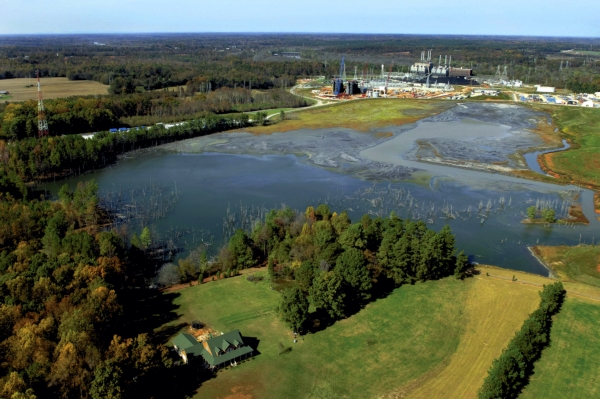Coal ash ponds and risk
Published 12:10 am Tuesday, March 22, 2016

- A November 2010 aerial photograph of the first holding basin that was being used to hold the coal ash from the coal-fired Buck Steam plant seen in the background. JON C. LAKEY / SALISBURY POST
A Pandora’s box of ills burst open when tons of sludge poured from a Duke Energy coal ash pond into the Dan River two years ago.
Pollution, fines, new laws and stringent water standards followed, and Duke has commenced a mammoth cleanup under deadlines mandated by the state.
Dukeville residents and others who live near coal ash ponds are understandably scared and wary. A year after being told their well water was unsafe, they have received letters that rescinded the warning. Their water is as safe as the water in many cities and towns, state health officials now say. That’s too much of a flip-flop for residents to accept. The fear unleashed by the initial warning cannot be reined back in. As one local health official said, you can’t put the genie back in the bottle.
Duke has made serious mistakes in the handling of coal ash, but state health officials are the ones responsible for creating near-hysteria with overly strict water standards for heavy metals that occur naturally in the region’s soil. The standards are tougher than those used for municipal water systems. Some Dukeville residents will never trust their well water again.
Now those people and the general public are being asked for input on the coal ash ponds’ classification, which will determine when and how the state requires Duke to deal with the unlined basins. The material cannot be simply whisked away. So far the state says the Buck ponds’ classification is low-to-intermediate. Low-risk ponds could sit unchanged for 13 years before being capped in place. Under intermediate risk, the ponds would have to be excavated by 2024, eight years from now.
Ideally, the coal ash would be taken out, and taken out now. Why tolerate one more day of risk than necessary? Ideally, though, other communities would not also be demanding swift action. State law gives Duke latitude, with sites posing the greatest risk being excavated first. Residents may get some comfort from knowing Buck’s risk is not the worst, but it’s still a risk — and another potential Pandora’s box.


